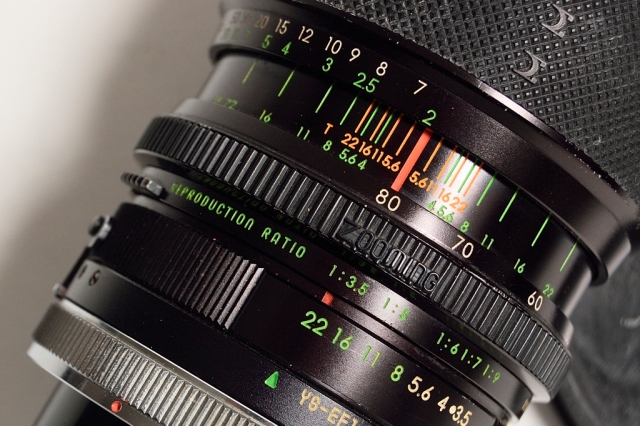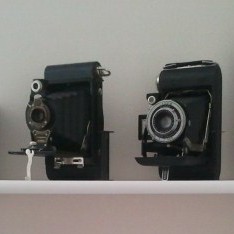
The Sigma XQ 39-80mm f3.5 is introduced in 1975 as the first zoom lens in the Sigma XQ series. The XQ series is the predecessor of the modern EX series, all lenses in this series have above-average optical quality and most of them are faster than other lenses with similar focal lengths. This XQ 39-80mm f3.5 was called the “mini-zoom” by Sigma but it is by no means “mini” in the modern standard. First of all, beside the rubber grips, the whole lens is made of metal and glass. It has a 62mm filter thread and although I could not find any information on its optical formula on the Internet, I am pretty sure it has many chunks of glass inside judging from its weight and its optical quality (will talk about this below).
The XQ 39-80mm f3.5 uses the Sigma YS interchangeable mount system which is similar to the more well-known Tamron Adaptall mount. The YS mount system is based on the the original T-mount but provides automatic diaphragm operations. The YS mount attached to my XQ 39-80mm is for Canon FD mount bodies. It does not just provide open aperture metering and focusing but also the “automatic” mode (the “A” setting on OEM FD mount lenses) for shutter priority exposure equipped bodies. However, there is no letter “A” on the aperture ring but a switch (see photo below) that enables the feature.

Switching the lever to “EF SERVO” resembles turning the aperture ring to “A” on an OEM lens and pushing it back to “FTb F-1” or “M” will disable the “A” setting. Well, what does “EF SERVO” mean? It is of course not the same meaning as the “EF” on the modern Canon EF/EF-S mount autofocus lenses but the model name of the first Canon body (introduced in 1973) with shutter priority automatic exposure. Similarly, the model names of the two manual exposure only Canon bodies in the same era, the F1 and the FTb, are marked on the “M” side of the switch.

The XQ 39-40mm also has a macro feature enabled with a separate macro ring (see photo above). This allows the lens to focus pretty close, up to 1:3.5 magnification at 40mm setting. For many ordinary users, this waives the need of a true macro lens which usually has a magnification of 1:2 at that time (today, almost all macro lenses have 1:1 magnifications). However, since there is no spacing between the macro ring and the zoom ring, it is almost not possible to keep the zoom ring stationary while adjusting the macro ring unless both hands are used (thus, you need a tripod)!
Up to this point, you may ask why Sigma made a mid-range zoom starting from 39mm (which some would called a “wide-normal” focal length) rather than the more useful true wide-angle 35mm or 28mm. It is because a wide to short telephoto zoom was difficult to designed/made at the time when this lens was introduced in 1975. The first mid-range zoom with 35mm as its wide-end, the Canon FD 35-70 f2.8-3.5 S.S.C., was introduced only 2 years earlier and zooms with wide-ends was discussed in an 1977 issue of Popular Mechanics magazine as “new” technology!

In my opinion, Sigma made a smart move on making this lens less wide at its starting focal length. I believe because of this, the lens maintain high optical quality with a relatively fast constant maximum aperture while keeping its price within the reach of of a larger market than other professional zooms. So far, I have shot two rolls with this lens and found that it is pretty sharp especially given its age and being an early zoom lens. The two sample photos below where shot with Fujifilm REALA color negative (ASA100). First one was shot stopped down (about f5.6~8) and the second one was shot wide-openned at f3.5.


However, I do have a few complaints about the XQ 39-80mm. First of all, possibly due to its coatings, the lens gives pale and dim colors compared to more modern lenses. Secondly, more important, is its handling issues. The lens has a total of four separate control rings: focusing, zooming, macro and “A” aperture mode which make it quite troublesome to use. Moreover, the levers of the macro ring and the switch for the “A” aperture are made of a thin piece of metal with no rubber taps. This make operating the lens under freezing temperatures quite painful for my fingers. Finally, the lens is a bit too heavy to handhold for a long period of term especially when composing vertical shots.
Status: Sold

